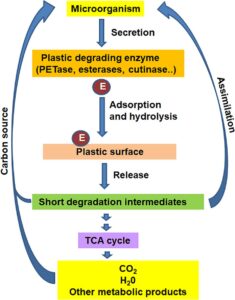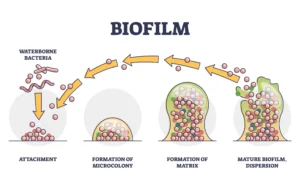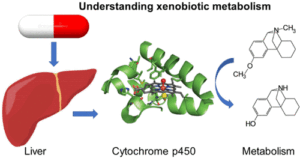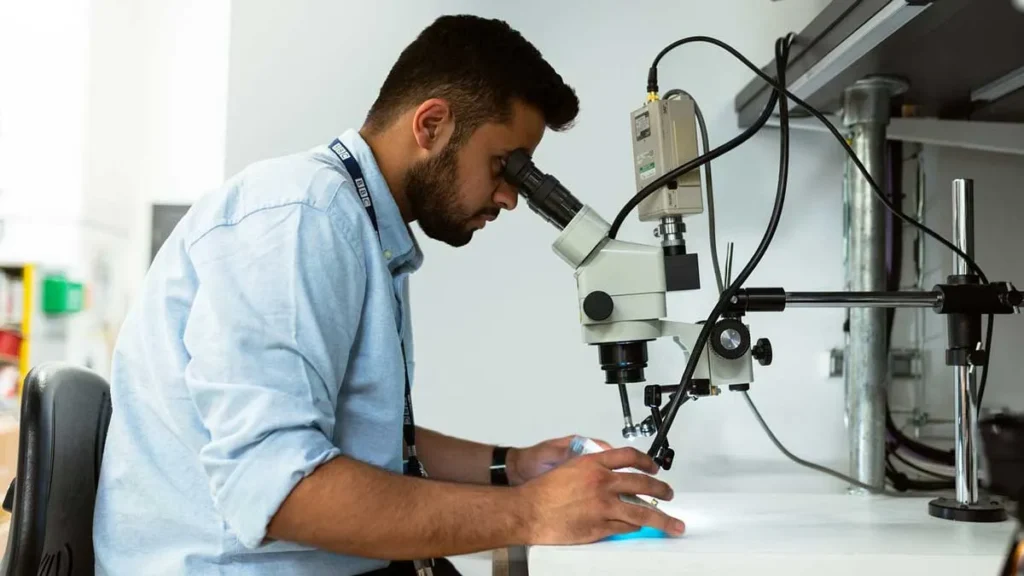Biochemical and Microbiological Methods of Inorganic Phosphorus Removal from Wastewater
Removing inorganic phosphorus (P) from wastewater is a crucial process in mitigating eutrophication, a phenomenon caused by excessive nutrient accumulation in water bodies. The biochemical and microbiological aspects of inorganic phosphorus removal involve several mechanisms that include chemical precipitation, microbial uptake, and enhanced biological phosphorus removal (EBPR) processes.

1. Biochemical Mechanisms
a. Phosphorus in Wastewater
- Phosphorus primarily exists as orthophosphates (PO43-), polyphosphates, and organic phosphates.
- Orthophosphates are the primary form targeted during treatment because they are readily bioavailable and contribute to eutrophication.
b. Chemical Precipitation
- Common chemicals such as aluminum sulfate (alum), ferric chloride, and lime are added to wastewater to precipitate phosphorus as insoluble salts:
- Aluminum and Ferric Salts: Form aluminum phosphate (AlPO₄) or ferric phosphate (FePO₄).
- Lime (Calcium Hydroxide): Produces calcium phosphate (Ca₃(PO₄)₂) under alkaline conditions.
- While effective, chemical precipitation increases sludge production and operational costs.
2. Microbiological Aspects
a. Enhanced Biological Phosphorus Removal (EBPR)
EBPR leverages specific microbial communities, especially polyphosphate-accumulating organisms (PAOs), to biologically remove phosphorus.
- PAO’s Role:
- PAOs uptake volatile fatty acids (VFAs) under anaerobic conditions and store them as polyhydroxyalkanoates (PHAs).
- PAOs release orthophosphates into the wastewater during this process by breaking down their internal polyphosphate stores.
- Under aerobic conditions, PAOs utilize stored PHAs as an energy source to take up and store phosphorus as intracellular polyphosphates.
- This cyclic process results in the net removal of phosphorus from wastewater.
b. Supporting Microbial Communities
- Glycogen-Accumulating Organisms (GAOs): Compete with PAOs for VFAs but do not contribute to phosphorus removal.
- Diverse Bacteria: Includes genera such as Acinetobacter, Candidatus Accumulibacter phosphatis, and others involved in phosphorus cycling.
3. Factors Influencing EBPR
- Anaerobic-Aerobic Conditions: Alternating anaerobic and aerobic zones in treatment systems encourage PAO activity.
- Carbon Source: Availability of VFAs (e.g., acetate, propionate) is critical for PAO activity.
- pH and Temperature: Optimal pH (6.5–8) and temperature (20–30°C) enhance PAO activity.
- Competition: GAOs can outcompete PAOs under certain conditions, reducing phosphorus removal efficiency.
4. Integration of Biochemical and Microbiological Processes
- Hybrid Systems: Combine chemical precipitation with biological processes to achieve higher removal efficiency.
- Phosphorus Recovery: Techniques like struvite (MgNH₄PO₄⋅6H₂O) crystallization recover phosphorus as a valuable resource for fertilizer.
5. Emerging Research
- Use of genetically modified organisms (GMOs) to enhance phosphorus uptake efficiency.
- Application of advanced metagenomics and transcriptomics to better understand microbial community dynamics.
- Exploration of microbial electrochemical systems to facilitate phosphorus recovery while generating bioelectricity.
By leveraging these biochemical and microbiological mechanisms, wastewater treatment plants can effectively reduce inorganic phosphorus levels, contributing to environmental sustainability and resource recovery.











